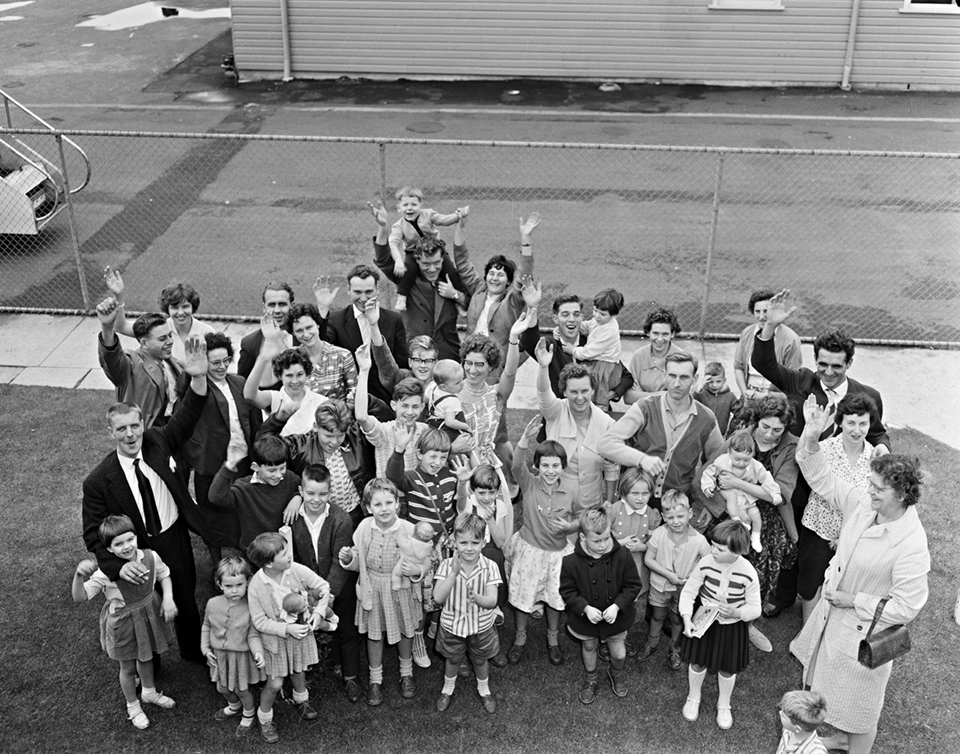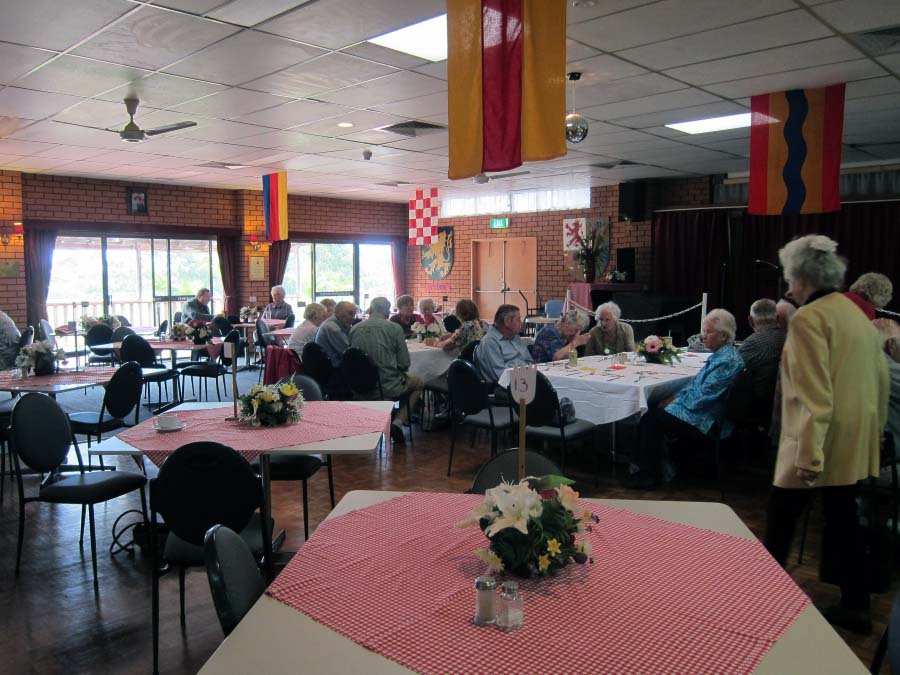The Dictionary of Sydney was archived in 2021.
Dutch Australian Society Neerlandia
Citation
Persistent URL for this entry
To cite this entry in text
To cite this entry in a Wikipedia footnote citation
To cite this entry as a Wikipedia External link
Dutch Australian Society Neerlandia
Relations between Australia and the Netherlands can be said to have been 'established' in 1606 when the Dutch vessel the Duyfken arrived on the west coast of Cape York Peninsula. [1]
From that time on, and for the next 150 years, the Dutch were to play a unique and indispensible role in the 'move down under' for European settlers of whatever nationality. [2]
Pre-World War II Dutch communities in Australia
While a lot is known about Dutch communities formed in Australia post World War II, not so much is known about Dutch arrivals prior to this time. Dutch people who arrived in Australia before World War II were generally isolated individuals or small family groups who did not form Dutch communities in Australia. [3] There is one instance of Dutch presence pre-World War II that is worthwhile mentioning. The Dutch, having a centuries- long colonial presence in Indonesia, established a monthly steam boat route between Jakarta (then called Batavia) and Sydney in 1908. This led to a small trickle of immigrants, but no significant Dutch communities were established in Australia at that time. [4]
Postwar Dutch migration to Australia
[media]Subsequent global events, particularly World War II, brought the two nations much closer together. The economic and social situation of the Netherlands following World War II generated mass emigration to Australia and Canada. In 1951, the Netherlands Australia Migration Agreement (NAMA) came into effect, under which both the Dutch and Australian governments subsidised migration of the Dutch to Australia. [5] In 1952 close to 16,000 Nederlanders emigrated to Australia. [6]
Many immigrants were housed by the Australian government in old army camps in various outer suburbs of Sydney. However several Dutch people decided to undertake their new journey on their own and settled in Het Tentenkamp – a privately run camping ground in Narrabeen (now called The Lakeside Caravan Park). [7]
Forming the DAS Neerlandia
Het Tentenkamp laid the foundations for a strong Dutch community and became a place that Dutch immigrants could call home. Here the development of a Dutch society began and in 1952 an informal club was set up in Narrabeen. In 1954 the society known as Neerlandia was officially founded by Jan van t' Veen. [8]
For nearly 20 years the Neerlandia club was purely a social organisation and met in various locations on the northern beaches. The club organised different fundraising schemes, such as selling discounted group travel, helped by their alliance with Royal Dutch Airlines (KLM), and ticketed Dutch entertainment nights with Dutch artists. With the money thus raised, came an obligation to do something useful for the community with it. [9]
Building the DAS Neerlandia clubhouse
It wasn't [media]until 1975 that the Neerlandia society was given a real opportunity of having its own building. Richard Healey, then New South Wales Minister for Community Services and Health, set aside Crown land at the end of Bantry Bay specifically designated for use by the clubs of Sydney's ethnic communities. A U-shaped road would be built and each club could occupy and rent an acre (4046 square metres) of that land. On 12 August 1975 the land had been officially granted and various ethnic groups took up this offer – the Austrians, the Czechoslovakians, the Scandinavians, the Armenians and of course, the Dutch – all of whose clubs still exist there today. [10]
Land was officially designated to the Dutch society in 1976 and in June 1977 Warringah Shire Council approved the plans of the Dutch architect William A Brandt for the new Neerlandia clubhouse. On 18 October 1977 a contract was signed between the builders Beukers and Henze and the DAS Neerlandia, and construction began soon afterwards. [11]
[media]The Neerlandia clubhouse, located on the corner of Grattan Crescent and Bantry Bay Road in Frenchs Forest, was constructed as a simple brick building – most likely due to the restricted budget. To get the club finished, working bees were held where many members and their spouses and children worked on various jobs. [12] It was truly a community project.
On 1 April 1978 the DAS Neerlandia clubhouse was officially opened by the Consul-General of the Netherlands, Mr C van Straaten. Soon after, in September 1978, the building was certified by Warringah Shire Council as a public hall. This was a great achievement, as at the time 'Neerlandia was the only Dutch social club in the Sydney metropolitan area that had an address it could call home'. [13]
In the early 1990s the land the clubhouse was built on was purchased by DAS Neerlandia for $200,000, after many negotiations with the New South Wales Department of Lands. [14]
DAS Neerlandia today
[media]Today, the clubhouse contains a kitchen and bar, toilets, a general purpose room for dining, functions and meetings, and a small shop – 't'Winkeltje' – selling Dutch foods. There is also a deck area which looks over the adjacent sports field and has distant city views.
[media]Representation of Dutch culture is practically non-existent in the architecture of the club. It is left to the Dutch decorations and flags hanging around the main hall room and the shop to create a cosy Dutch-home-like atmosphere. At the DAS Neerlandia, Dutch culture is mainly experienced through the people who inhabit the space, through their food and cultural celebrations.
In 2012 the club and shop are open on Thursdays and Sundays between 11 am and 3 pm, selling lunches and snacks. Dutch cultural celebrations such as Oranje Fest (Queen's Birthday) and St Nicolaas's Day are held at the club yearly. Eurofest is also held every year in spring, in conjunction with the neighbouring clubs, and other European clubs in the Sydney area.
References
Mijntje Hage, Fifty Years: The Story of the Dutch Australian Society 'Neerlandia', DAS Neerlandia, Sydney, 2004
Nonja Peters (ed), The Dutch Down Under: 1606–2006, University of Western Australia Press, Crawley WA, 2006
Notes
[1] Stephen Brady, Hans Sondaal, Foreword in Nonja Peters (ed), The Dutch Down Under: 1606–2006, University of Western Australia Press, Crawley WA, 2006, p ix
[2] Bruce Donaldson, 'The Dutch contribution to the European discovery of Australia', in Nonja Peters (ed), The Dutch Down Under: 1606–2006, University of Western Australia Press, Crawley WA, 2006, p 4
[3] Diane Gabb, 'In search of utopia', in Nonja Peters (ed), The Dutch Down Under: 1606–2006, University of Western Australia Press, Crawley WA, 2006, p 76
[4] Edward Duyker, 'Dutch', Dictionary of Sydney, 2008, http://www.dictionaryofsydney.org/entry/dutch, viewed 23 October 2012
[5] Joed Elich, 'Dutch and Australian Governments' perspectives on migration', in Nonja Peters (ed), The Dutch Down Under: 1606–2006, University of Western Australia Press, Crawley WA, 2006, pp 152–153
[6] P Wim Blauw, 'Explanations of post-war Dutch emigration to Australia', in Nonja Peters (ed), The Dutch Down Under: 1606–2006, University of Western Australia Press, Crawley WA, 2006, p 177
[7] Mijntje Hage, Fifty Years: The Story of the Dutch Australian Society 'Neerlandia', DAS Neerlandia, Sydney, 2004, p 11
[8] Mijntje Hage, Fifty Years: The Story of the Dutch Australian Society 'Neerlandia', DAS Neerlandia, Sydney, 2004, pp 11–17
[9] Mijntje Hage, Fifty Years: The Story of the Dutch Australian Society 'Neerlandia', DAS Neerlandia, Sydney, 2004, pp 39–47
[10] Mijntje Hage, Fifty Years: The Story of the Dutch Australian Society 'Neerlandia', DAS Neerlandia, Sydney, 2004, pp 48–49
[11] Mijntje Hage, Fifty Years: The Story of the Dutch Australian Society 'Neerlandia', DAS Neerlandia, Sydney, 2004, p 51
[12] Mijntje Hage, Fifty Years: The Story of the Dutch Australian Society 'Neerlandia', DAS Neerlandia, Sydney, 2004, p 53
[13] Mijntje Hage, Fifty Years: The Story of the Dutch Australian Society 'Neerlandia', DAS Neerlandia, Sydney, 2004, p 53
[14] Mijntje Hage, Fifty Years: The Story of the Dutch Australian Society 'Neerlandia', DAS Neerlandia, Sydney, 2004, pp 61–62
.







